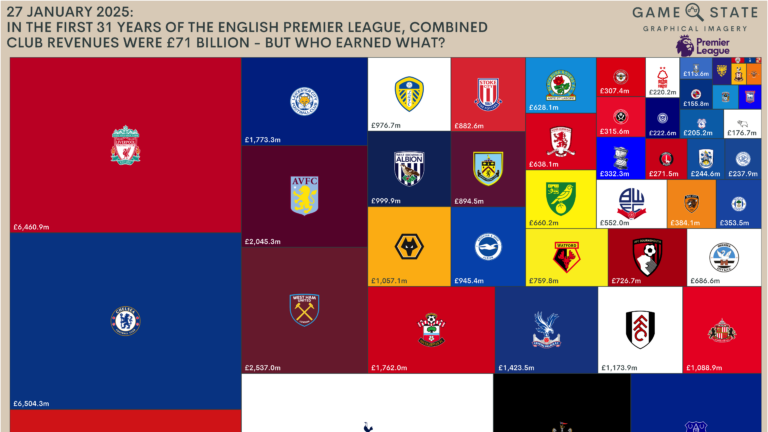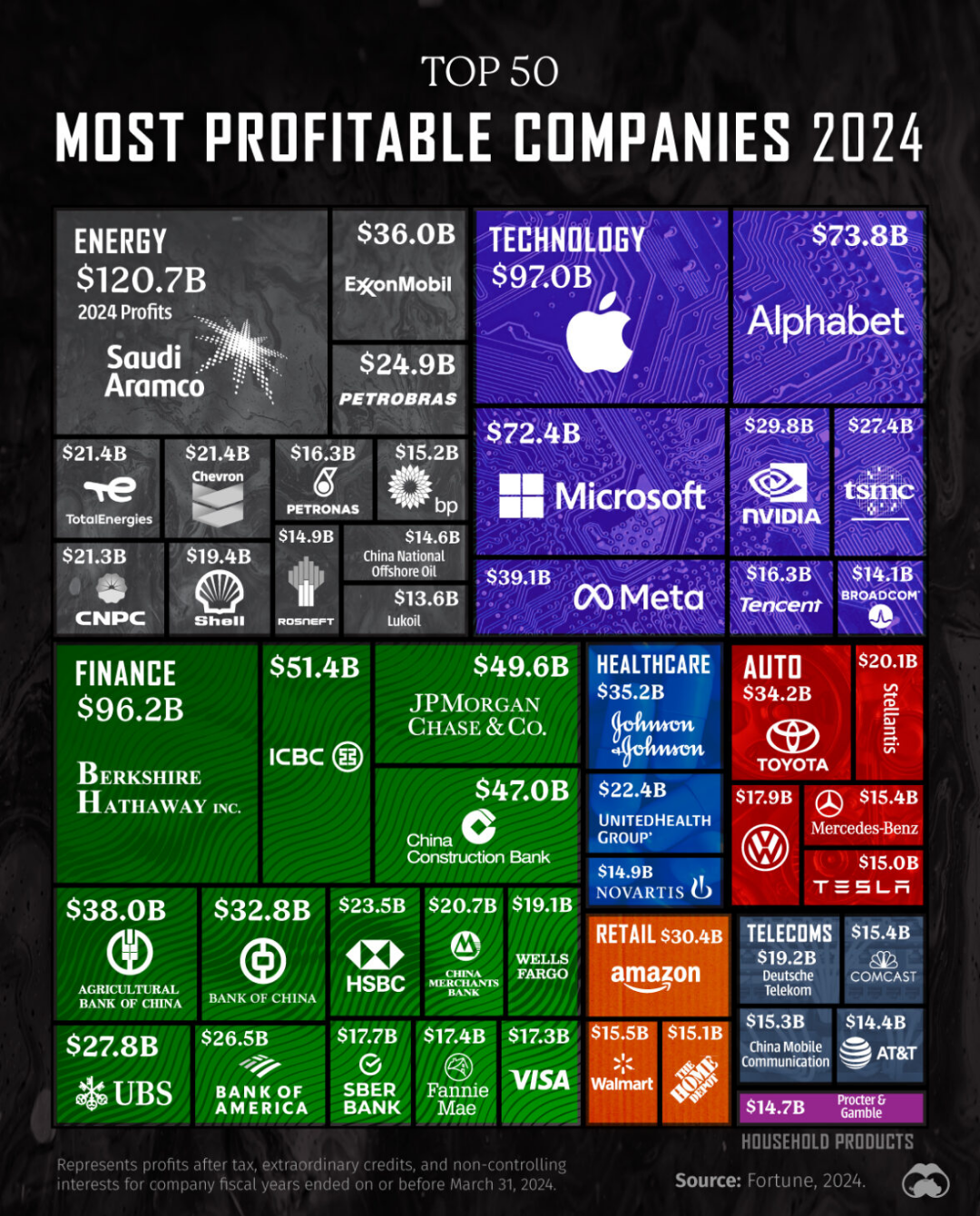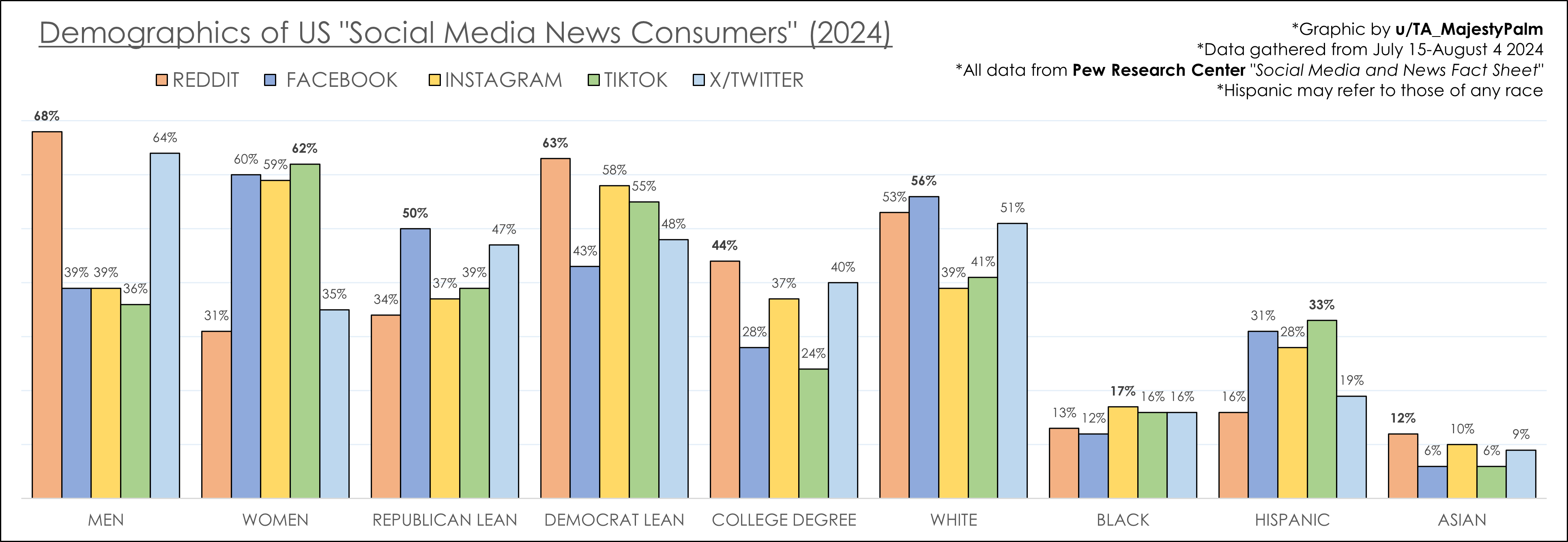How do some football clubs consistently stay at the financial pinnacle while others struggle for revenue stability?
The English Premier League (EPL) astounds the global sports arena with its colossal earnings, generating over £6 billion annually. Remarkably, the "Big Six" clubs alone contribute £3.5 billion—57% of the league's total revenue.
This article unveils the revenue rankings of EPL clubs and highlights the top performers in an arena where financial prowess directly influences on-field success.
Discover how these clubs maintain their lucrative standings and what it means for the future of football economics.
Are you curious to know which English Premier League club tops the earnings list and why?
Revenue Rankings of English Premier League Clubs
The dominance of the Big Six clubs in the English Premier League is a significant factor in the league's overall financial success. For the 2023-24 season, these clubs—Manchester United, Manchester City, Liverpool, Chelsea, Arsenal, and Tottenham Hotspur—together generated a staggering £3.5 billion. This accounts for 57% of the total revenue generated by the Premier League, which surpassed £6 billion. Their financial prowess is a result of lucrative sponsorship deals, expansive fan bases, and consistent performances on both domestic and international stages.
Globally, the English Premier League clubs hold an impressive standing. In fact, nine Premier League teams are ranked among the top 20 revenue-generating football clubs worldwide for the 2023-24 season. This places the EPL in a formidable position compared to other leagues, such as La Liga and Serie A, in terms of financial performance. The league's ability to attract international broadcasting deals and commercial partnerships underscores its global appeal and economic clout.
The average valuation of a Premier League club stands at $1.51 billion, reflecting the league's economic strength. This high valuation impacts various aspects of the clubs, including their ability to attract world-class talent and invest in infrastructure. Moreover, it signals a stable financial environment that can foster long-term growth and competitiveness. Such valuations also influence the market dynamics of player transfers and sponsorships, further solidifying the EPL's status as a financial powerhouse in the world of sports.
Key Revenue Sources for EPL Clubs
Broadcasting rights are a dominant source of income for English Premier League (EPL) clubs. How significant is this revenue stream? Broadcasting deals contribute billions annually, with domestic and international agreements fueling club finances. The Premier League's global reach ensures lucrative contracts with major networks, providing a steady revenue stream that supports club operations and player acquisitions. This income is crucial for maintaining competitive squads and investing in club infrastructure.
Sponsorship deals and partnerships also play a pivotal role in the financial landscape of EPL clubs. What types of sponsorships are most valuable? Shirt sponsorships and kit supply agreements are among the most lucrative, often reaching multi-million dollar figures. Clubs actively seek partnerships with global brands to enhance their market presence and financial stability. These deals not only bring in significant revenue but also help clubs expand their global fan base and brand recognition.
Matchday revenues are another essential component of EPL club finances. How do clubs maximize this revenue stream? Ticket sales are paramount, with clubs employing scenario modeling to optimize pricing and sales volume. Hospitality packages further enhance matchday earnings, providing premium experiences for fans and corporate clients. These strategies ensure that clubs can capitalize on their home games, turning stadium attendance into substantial financial gain.
Digital and social media platforms have become increasingly important for EPL clubs seeking to diversify their income. How are clubs leveraging these platforms? By engaging fans through digital content and collaborations with influencers, clubs create new revenue opportunities. Merchandise sales and exclusive content subscriptions are monetized through online channels, allowing clubs to reach a broader audience and generate additional income streams. This digital transformation not only boosts revenue but also strengthens fan engagement and loyalty.
Financial Performance and Economic Impact of EPL Clubs
The economic influence of English Premier League (EPL) clubs on the global market is profound. How do EPL clubs impact the global economy? These clubs are not just sports entities; they are global brands that drive significant economic activity. With a presence in international markets, EPL clubs attract substantial foreign investment, broadcasting deals, and commercial partnerships. This global reach enhances the league’s revenue streams and elevates its status as a financial powerhouse in the sports industry.
What drives club profitability in the EPL? Commercial growth and player transfers are primary profitability drivers. Clubs like Aston Villa have demonstrated this by capitalizing on player transfers, earning substantial sums like the £100 million from Jack Grealish's transfer to Manchester City. Additionally, top-performing clubs leverage their market appeal to secure lucrative sponsorships and partnerships. These activities not only boost club revenues but also reinforce their competitive edge in attracting top talent and expanding their fan base.
The financial dynamics within the EPL have significant implications for the league's competitive balance. How do these financial factors affect competition? The economic disparity between clubs can lead to competitive imbalances, where wealthier clubs dominate the league due to their ability to invest heavily in players and infrastructure. However, the league’s financial strength also incentivizes all clubs to innovate and seek diverse revenue sources, promoting a dynamic and evolving competitive landscape. This balance ensures that while top clubs maintain their dominance, opportunities for growth and advancement remain accessible to all EPL teams.
Strategies for Revenue Growth and Diversification in the EPL
How are EPL clubs leveraging digital transformation for revenue growth? By utilizing digital and social media platforms, clubs engage fans with targeted content and interactive experiences. This engagement is not just about likes and shares; it translates into monetizable opportunities such as merchandise sales and exclusive content subscriptions. Collaborations with influencers further amplify club visibility, tapping into broader audiences and expanding fan bases. These digital strategies are crucial for enhancing revenue streams beyond traditional methods, ensuring clubs remain financially competitive in a rapidly evolving market.
What non-traditional revenue streams are EPL clubs exploring? Clubs are increasingly turning to hospitality packages and event hosting to diversify income sources. Offering premium matchday experiences to corporate clients and fans provides substantial financial returns. Additionally, stadiums are being utilized for non-sporting events, such as concerts and conferences, maximizing the use of these venues and generating additional revenue. These innovative approaches not only boost club finances but also enhance community engagement and brand presence.
- Engaging fans through interactive social media campaigns
- Collaborating with influencers for broader reach
- Offering premium hospitality packages for matchdays
- Hosting concerts and conferences at stadiums
- Monetizing digital content and merchandise sales
The Impact of COVID-19 on EPL Club Revenues
How did the COVID-19 pandemic affect EPL club revenues? The pandemic caused significant financial disruptions across the English Premier League (EPL). With matches played behind closed doors, clubs faced substantial losses in matchday revenue. This absence of fans in stadiums led to a dramatic decline in ticket sales and hospitality income. Additionally, uncertainties around broadcasting schedules affected media rights income, further straining club finances. The financial impact was stark, highlighting the vulnerabilities of clubs heavily reliant on these traditional revenue streams.
What recovery trends emerged post-pandemic? EPL clubs have shown resilience by implementing strategies to stabilize and grow their revenue. As stadiums reopened, clubs focused on optimizing matchday experiences to entice fans back, boosting ticket sales and hospitality revenues. Innovations in digital engagement also played a crucial role, with clubs leveraging social media and streaming platforms to reach wider audiences. These efforts, combined with strategic partnerships and sponsorships, have been pivotal in the league's post-pandemic recovery, driving financial growth trends and restoring economic stability.
Financial Management and Future Outlook for EPL Clubs
What financial management tools are EPL clubs currently using? Many clubs are employing advanced software solutions like Vena to centralize financial and operational data. This approach effectively eliminates data silos and enhances decision-making capabilities. By utilizing such comprehensive planning tools, clubs can streamline their financial processes, ensuring more accurate budget forecasts and improved resource allocation. These tools enable clubs to adapt swiftly to market changes, maintaining financial stability and competitiveness.
How do EPL clubs project future revenue and plan strategically? Clubs focus on diversifying revenue streams and enhancing digital engagement as part of their strategic planning. With the league's global appeal, clubs anticipate continued growth in broadcasting rights and international sponsorships. Additionally, investments in digital platforms are expected to yield substantial returns, broadening fan engagement and monetization opportunities. Strategic revenue planning involves leveraging data analytics to identify emerging market trends and capitalize on new commercial opportunities, ensuring sustained financial growth.
| Financial Aspect | Future Outlook |
|---|---|
| Broadcasting Rights | Expected to grow with international demand |
| Sponsorship Deals | Increase through global brand partnerships |
| Digital Engagement | Enhanced fan interaction and monetization |
| Data-Driven Strategies | Improved decision-making and market adaptation |
Final Words
The English Premier League's financial machinery stands as a beacon of economic prowess, with record-breaking revenues exceeding £6 billion.
The Big Six dominate contributions, yet EPL's fiscal footprint globally reaches nine teams among the top 20 earners.
Strategic revenue diversification, rich sponsorships, and advanced digital platforms drive this success, ensuring robust growth.
Despite the pandemic's challenges, clubs excelled in recovery, showcasing innovation in digital engagement and event hosting.
The league's financial management remains strategic and forward-thinking, fostering a landscape where Excel financial management tools fuel decision-making.
Economic prosperity in the EPL continues to thrive, solidifying its stature as a leader in club revenues globally.



